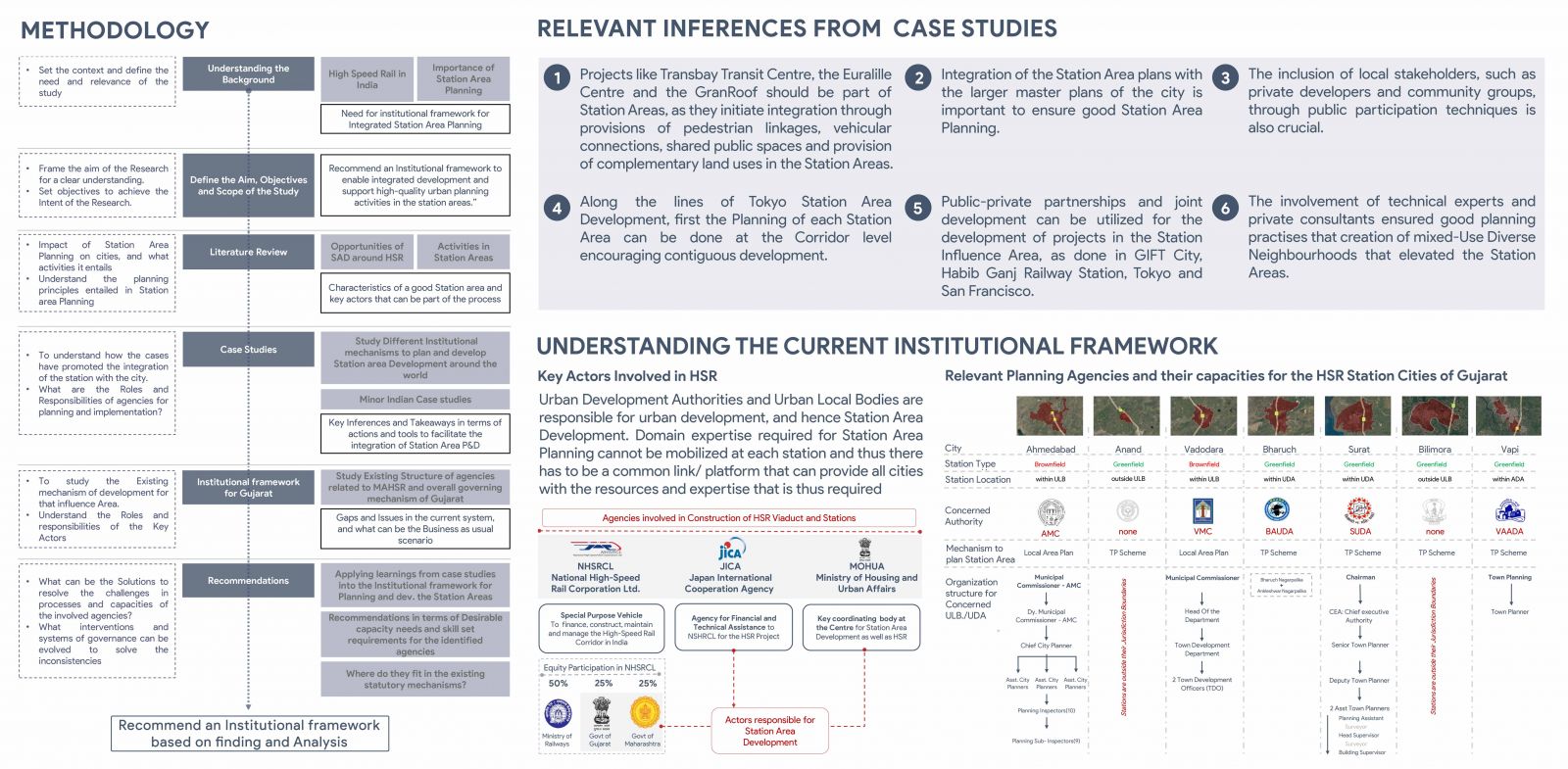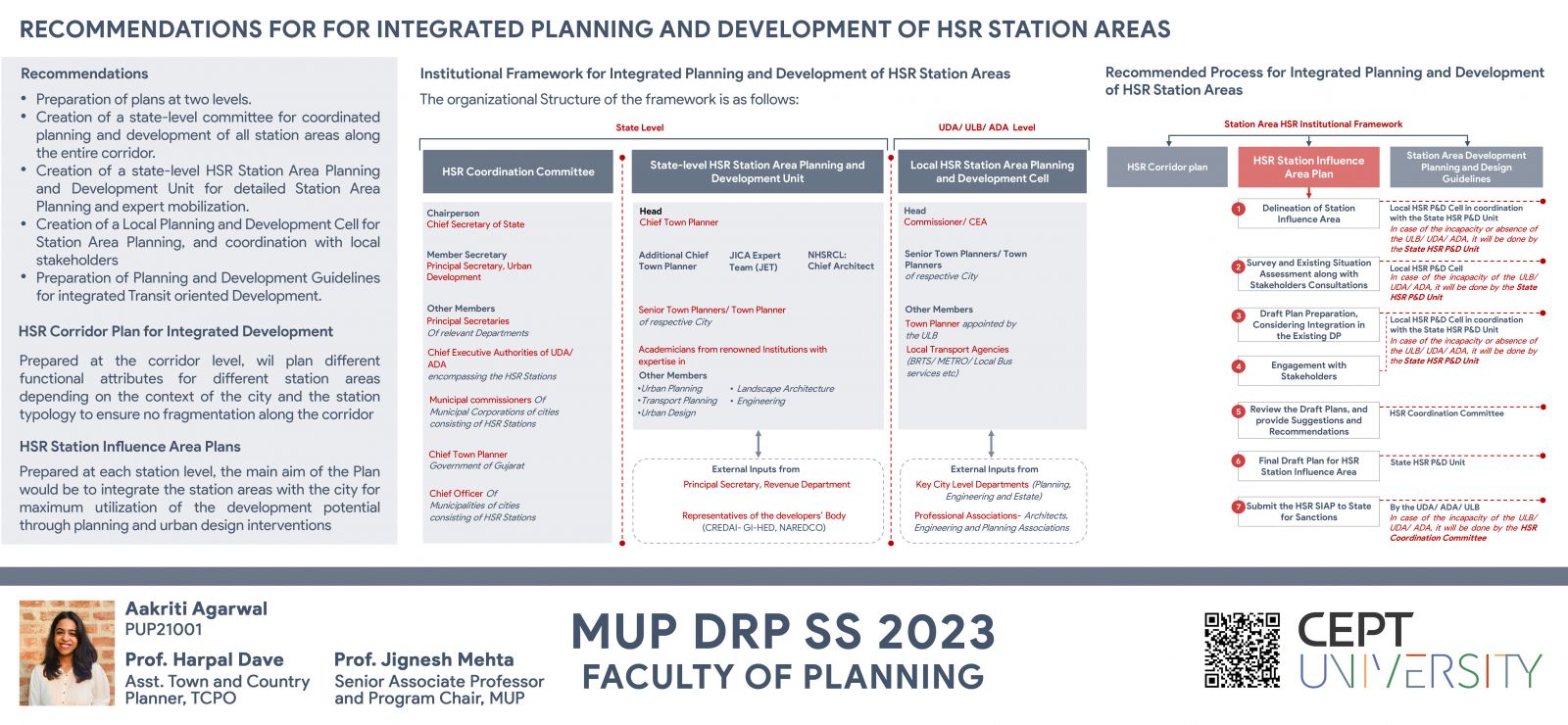Your browser is out-of-date!
For a richer surfing experience on our website, please update your browser. Update my browser now!
For a richer surfing experience on our website, please update your browser. Update my browser now!
The Mumbai Ahmedabad High-Speed Rail is the first High-Speed Rail project in India. It has the potential to bring significant improvements to the transport infrastructure and catalyse urban development. Cities stand to benefit substantially from the development that high-speed rail can bring, and urban local bodies and development authorities can leverage this potential to enhance their cities. Therefore, it is essential to pay close attention to the planning and development of station areas to integrate with the stations and the surrounding city. Currently, there is ambiguity in the demarcation and delegation of responsibilities related to Station Area Development among urban local bodies and development authorities. This has led to a lack of focus by urban local bodies and development authorities on this critical aspect. This research has been focused on addressing this gap. By analysing international case studies and existing mechanisms for urban planning, the study identified gaps in capacity and jurisdiction. It gathered insights into how different institutional systems facilitate the development and integration of station areas. The study also acknowledged that station area development is a complex process that requires collaboration between multiple entities and stakeholders. To solve these inconsistencies, an institutional framework has been conceptualised at the state and local level such that the skills and powers are institutionally well arranged. The institutions thus created have been empowered to prepare micro and macro plans and guidelines to facilitate and enable integrated station area planning. The proposed institutional framework would ensure integrated station area development and enable coordination between NHSRCL, JICA, urban local bodies, and private developers. Along with this, the recommended framework would also coordinate station area developments at the corridor level. With this framework in place, the High-Speed Rail project can realize its full potential and catalyse urban development and stimulate economic growth.


